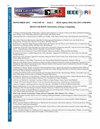D-AI2-M:利用以数据为中心的人工智能方法预测巴西乙醇产量
IF 1.3
4区 工程技术
Q3 COMPUTER SCIENCE, INFORMATION SYSTEMS
引用次数: 0
摘要
乙醇是巴西的主要生物燃料之一。巴西主要生产两种乙醇:i) 水乙醇,直接用作汽车燃料;ii) 无水乙醇,目前以 27% 的比例加入普通汽油中。2023 年,巴西国家石油、天然气和生物燃料局(ANP)的数据显示,巴西销售的乙醇(含水和无水乙醇)总量略高于 2800 万立方米(m3),几乎占全国液体燃料销售总量的 22%。这些数字说明了这种生物燃料在巴西的重要性。仅六个州就占了巴西乙醇产量的约 90%。生产的季节性以及将乙醇从生产地运输到分销和转售网络的必要性给物流带来了挑战。通常情况下,这种预测需要使用 ARIMA 等计量经济学模型。考虑到人工智能的最新进展,这一挑战提出了研究问题:我们能否利用人工智能模型 (AIM) 提高巴西主要生产州的月度无水乙醇和有水乙醇产量预测?我们的定量实验评估表明,D-AI2-M 在以下两种方法中具有卓越的预测性能:i) 局部:根据具体的时间序列,不同的 D-AI2-M 优于基准模型;ii) 全局:单一的 D-AI2-M 在全部评估时间序列中取得最佳平均性能。本文章由计算机程序翻译,如有差异,请以英文原文为准。
D-AI2-M: Ethanol Production Forecasting in Brazil Using Data-Centric Artificial Intelligence Methodology
Ethanol serves as one of Brazils primary biofuels. The country produces two main types of ethanol: i) hydrous ethanol, directly utilized as vehicle fuel, and ii) anhydrous ethanol, presently integrated at a rate of 27% into regular gasoline. In 2023, data from the National Agency of Petroleum, Natural Gas, and Biofuels (ANP) indicated that the total volume of ethanol sold in Brazil (hydrous and anhydrous) was just over 28 million cubic meters (m3), which corresponded to almost 22% of the total volume of liquid fuels sold in the country. These numbers illustrate the importance of this biofuel in Brazil. Just six states account for approximately 90% of Brazilian ethanol production. The logistical challenge arises from production seasonality and the necessity to transport ethanol from production sites to distribution and resale networks. Commonly, such prediction is supported using econometric models, such as ARIMA. Considering the recent advances in Artificial Intelligence, this challenge prompts the research question: Can we enhance monthly hydrous and anhydrous ethanol production prediction for the primary Brazilian-producing states using Artificial Intelligence Models (AIM) How should data be prepared for such an approach This study aims to contribute to logistical planning by employing D-AI2-M - a Data-Centric Artificial Intelligence (DAI) methodology - to aid in selecting AIM for ethanol production time series in the principal Brazilian-producing states. Our quantitative experimental evaluation demonstrates the superior forecasting performance of D-AI2-M in two approaches: i) Local: where different D-AI2-M outperform the benchmark models depending on the specific time series, and ii) Global: where a single D-AI2-M achieves the best mean performance across the complete set of evaluated time series.
求助全文
通过发布文献求助,成功后即可免费获取论文全文。
去求助
来源期刊

IEEE Latin America Transactions
COMPUTER SCIENCE, INFORMATION SYSTEMS-ENGINEERING, ELECTRICAL & ELECTRONIC
CiteScore
3.50
自引率
7.70%
发文量
192
审稿时长
3-8 weeks
期刊介绍:
IEEE Latin America Transactions (IEEE LATAM) is an interdisciplinary journal focused on the dissemination of original and quality research papers / review articles in Spanish and Portuguese of emerging topics in three main areas: Computing, Electric Energy and Electronics. Some of the sub-areas of the journal are, but not limited to: Automatic control, communications, instrumentation, artificial intelligence, power and industrial electronics, fault diagnosis and detection, transportation electrification, internet of things, electrical machines, circuits and systems, biomedicine and biomedical / haptic applications, secure communications, robotics, sensors and actuators, computer networks, smart grids, among others.
 求助内容:
求助内容: 应助结果提醒方式:
应助结果提醒方式:


